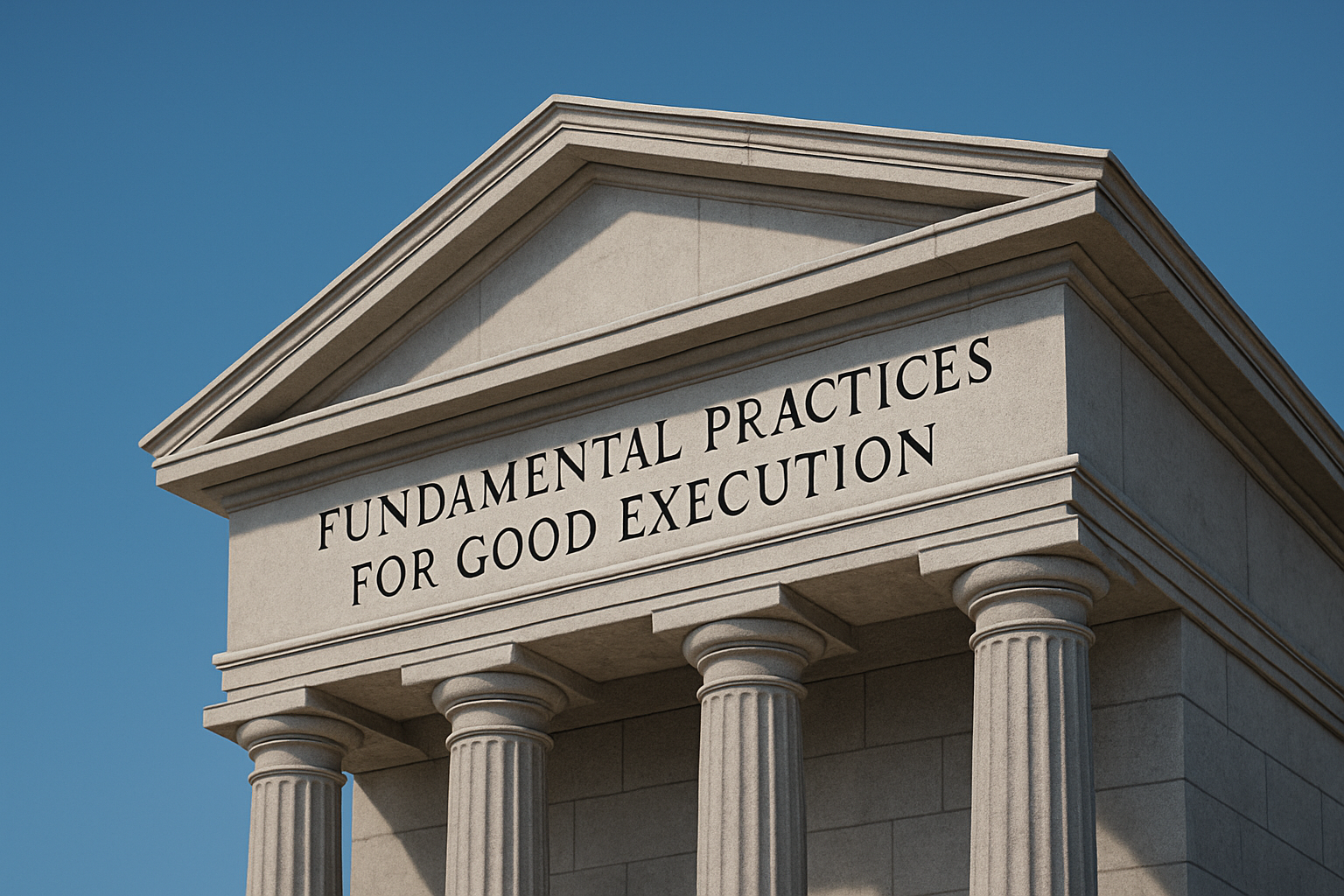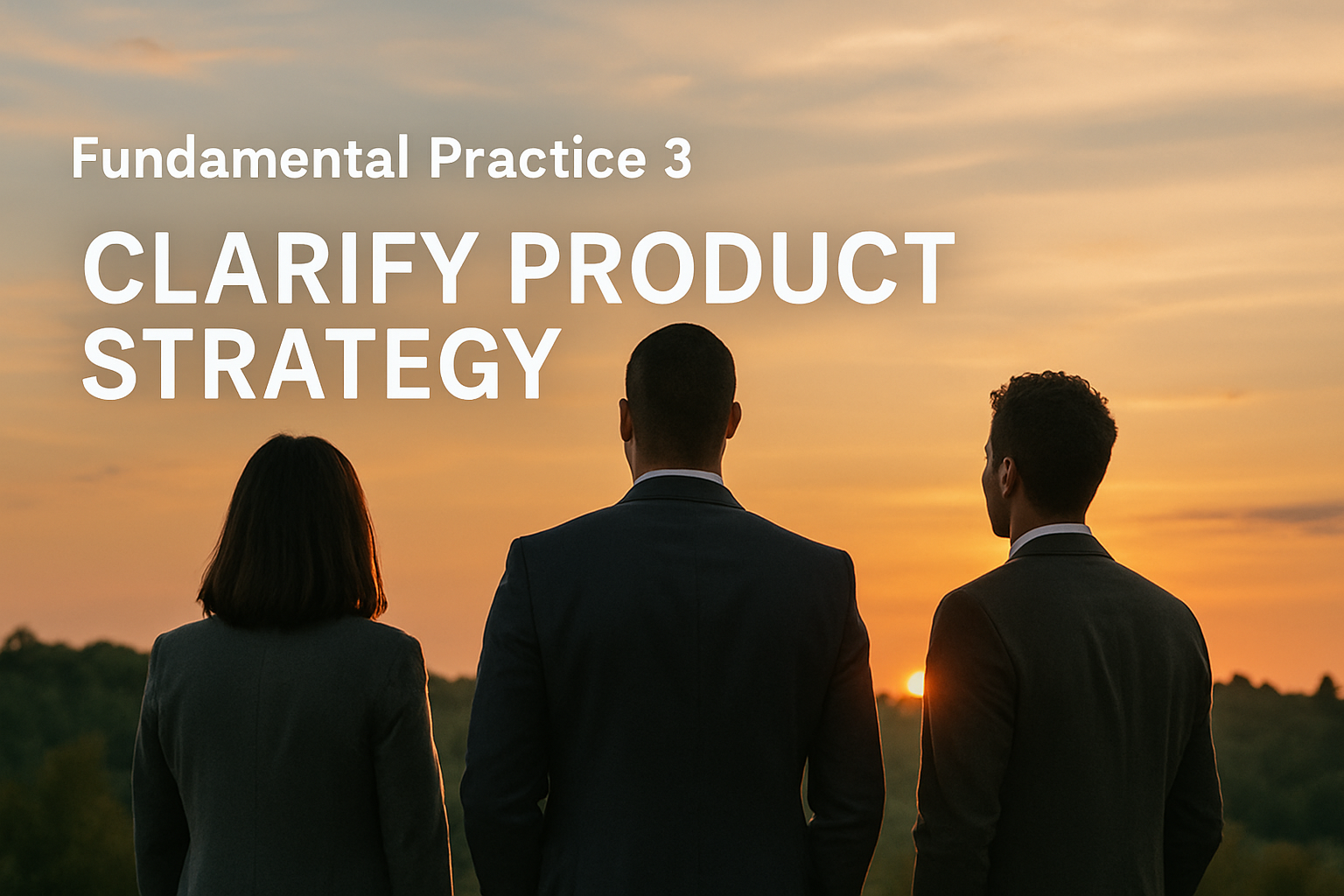
Return-to-office mandates miss the point. Discover why hybrid will become the new default and how leaders can design it for culture, retention, and results.

Whenever I join a new organisation, although I always review tools, processes, or regular events, there are three key fundamentals that I find are nearly always critical starting points, irrespective how of the organisation works.
Sure, your suite of tools, processes, and events matter, but they’re frequently not the root cause for why most teams struggle.
What I consistently see is that the core challenges are human-related not tool-related.
The key issues relate to how we collaborate to align, how we communicate our competence as a team in what we do, or whether we are able to craft a compelling vision and strategy that inspires an organisation to achieve.
When these human foundations are weak, no tooling or process optimisation can compensate for it. So when you are thinking about fixing your tools and processes, or enhancing metrics, the first question to ask is are you already doing a good job regarding these three key fundamentals - planning alignment, delivery transparency, and strategic clarity.
I find these factors have a greater influence over whether a team can move forward cohesively or slowly drift into misalignment.

Agile planning techniques have evolved over time, and one of the best rapid planning techniques is the Agile Inception session originally created by ThoughtWorks.
At its core, an inception session exists to help teams make the best possible decision about what to do next, based on the most up-to-date and relevant information available.
These sessions don’t need to be week-long events, and in my experience, as long as the conversation is structured, purposeful, and focused on alignment, they can be run effectively in as little as a 2-hour timebox.
Rapid planning is about executing a decision loop as effectively and as quickly as possible
One of the most well-known articulations of a decision loop is John Boyd’s OODA loop.
As a tactical Air Force pilot and strategist, Boyd distilled the OODA loop from years of practical teaching and real-world dogfighting scenarios. He used this framework to train U.S. Air Force pilots to out-think and out-adapt enemy combatants - even those flying more agile or technically superior aircraft.
The insight was simple but profound:
The pilot who can incorporate new information, adapt, and decide faster - wins.
In Boyd’s world, the speed and quality of decision-making meant life or death.
In today’s business environment, the same principle applies, perhaps now more than ever.
Organisations are experiencing a period of hyper-change, where business models, operating structures, and capabilities are being redefined and re-evaluated yearly, sometimes monthly. AI is accelerating this shift, compressing decision windows and increasing uncertainty.
The ability to make better, faster decisions with all available information is becoming one of the most critical organisational capabilities, making rapid effective planning even more important.
Planning isn’t about creating a static document that you can stick on the wall and admire. It’s an interactive activity that is about building alignment within a team that accelerates how they learn, adapt, and execute.
In every planning context, one principle remains true:
“If you do crap planning, you get crap outcomes — irrespective of how efficient your delivery engine is.”
I know it sounds crass, but when planning is treated as a fast, collaborative alignment loop rather than a bureaucratic step, teams unlock momentum.
They reduce miscommunication. They make better decisions. And they adapt faster when the environment shifts.
In a world increasingly shaped by AI where information is abundant but changing rapidly, the ability for teams to rapidly align, re-align, and move quickly is becoming one of the most important organisational capabilities.
Effective Rapid Planning techniques are what make this possible.

Empowered teams need trust.
Trust requires transparency.
And transparency is fundamentally a human behaviour, not a dashboard.
Leaders have responsibilities - governance, resource oversight, and risk management. Teams want autonomy and ownership. The bridge between the two is honest, consistent delivery reporting.
This is not about micromanagement; it’s about enabling collaboration.
As I often say to product leaders:
“Trust is the foundation of an empowered team. But to be trusted, you must be transparent.”
High-performing teams embrace this. They don’t hide risks. They surface them early. They collaborate with leaders to resolve issues before they become blockers. They show progress openly and take pride in clarity.
Transparency reduces the need for control by communicating competence and trustability.
It reduces unnecessary micromanagement.
When teams are open about what they are doing, how things are progressing, and where the real risks are, leaders naturally gain confidence. This allows leaders to create space for teams to step into and get involved with making real decisions about what will drive better outcomes.
In scaleups, this dynamic becomes even more important. It’s common, and entirely understandable, for a founder to struggle with letting go. After all, they used to make all the decisions and run everything. They knew every last detail about delivery. As the organisation expands, the process of scaling requires founders to relinquish that control to product managers, engineering managers, and functional leads.
Even when founders have the best intentions, without the ability to trust what their teams are doing, and without confidence that delivery is under control, the natural tendency is to drop back into delivery mode. Not because they want to micromanage, but because uncertainty fills the space where alignment and transparency should live.
In the organisations I’ve worked with, simple, aligned delivery reporting addresses this fundamental trust gap and creates the necessary space to build truly empowered teams.
Transparency strengthens relationships.
And it allows leaders and teams to operate with clarity instead of assumption.
If you want to read more check out my previous article on My Ideal Agile Delivery Report.

The third fundamental is about how humans create meaning together.
Teams collaborate best when they share clarity on:
Strategy doesn’t need to be perfect. It needs to be clear and understood.
As we use to say at a previous company I worked with:
“Done is better than perfect”
A simple, lucid strategy and vision helps excite a team towards achieving a common purpose. It transforms mercenaries into missionaries - people who genuinely believe in the vision instead of being conscripted or paid to believe in it.
A compelling vision generates speed and momentum in an organisation. It creates a sense of direction that can overcome the natural friction points you experience along the way.
Someone once said to me:
“If you really believe in a vision, do you need to be the person that solves it?”
And the answer is no.
In organisations that enable a clear, compelling vision, teams naturally work outside their functional boundaries. They collaborate more effectively with others. They exhibit higher levels of initiative, all in service of achieving the desired future state.
Teams don’t collaborate effectively when they don’t have a shared sense of purpose.
When teams hold different goals, it becomes difficult to sacrifice one team’s priorities to achieve a higher-order organisational purpose. Friction increases. Execution suffers.
The good news is that a simple, effective product vision and strategy doesn’t require complex frameworks. It can be created using rapid envisioning techniques like the Amazon Press Release, and then applying a working backwards approach to translate that vision into a roadmap of Objectives and Key Results, aligned with a chosen go-to-market strategy.
A clear strategy aligns people.
Alignment accelerates decision-making.
And clarity unlocks collaboration.
If you want to read more check out Ian McAllister's write up on the Press Release
These three execution fundamentals - planning, transparency, and strategy are all fundamentally about human alignment.
They shape:
When these fundamentals are strong, teams accelerate naturally.
When they are weak, organisations add more process, more governance, and more layers of control, which only slow them down further.
At Berst.io we won't help you with just want you want, but we can also help you address these three fundamentals with proven techniques and practices, creating the necessary conditions for clarity, trust, and momentum.
If you’re experiencing misalignment, slow decision-making, or delivery friction, it’s rarely a capability problem, it’s almost always an alignment problem.
Fix the fundamentals, and everything else becomes easier.
Reach out if you'd like to chat more

Return-to-office mandates miss the point. Discover why hybrid will become the new default and how leaders can design it for culture, retention, and results.

The rise of AI puts leadership at a crossroads: hand decisions to machines or design workplaces where humans and AI collaborate seamlessly.

Discover why the future of work will bring humans and AI teammates together in virtual offices. Learn how conversational AI and digital presence are reshaping collaboration, leadership, and workplace

How leaders can stay visible, approachable, and human in an increasingly digital workplace

Culture doesn’t grow by accident. Neither does connection. In physical offices, they emerge from architecture, rhythm, and proximity—none of which translate automatically into remote environments.

Launching The Remote Work Formula — A Guide for the Modern Workplace

High Empathy is the key to creating an effective working agreement that helps Distributed Teams succeed. This guide with help you with a step by step approach for doing this.

Creating context is a critical element for designing effective virtual workspaces. Virtual Offices like Berst can enable you to create radical transparency by connecting your context with rooms.

Hybrid workshops can be challenging, but there are some simple patterns that work in practice. Understanding this can help you setup your virtual office for success.

Contrary to the common advice, it is possible to align multiple teams around OKRs. When using a virtual office you, don't require physical rooms or movement so you can just focus on aligning.

The watercooler moment is one of the things that people feel has been lost in remote working environment, but Everest Engineering use Berst's virtual office to solve this and feel connected as a team.

Culture codes help set clear expectations about how people work and act. In distributed working environment this can be a key factors in the difference between high and mediocre performance.

Empathy is the key to building an inclusive team, especially in distributed teams when you can't rely on proximity. These 3 simple approaches can help you get off on the right foot.

Effective planning in Agile, allows teams to rapidly make decisions based on all readily available information to create an effective plan. This simple approach helps you do exactly that.

Organisations typically approach creating team alignment by setting and sharing a company vision. But this often falls flat. A Strategy Back-brief enables organisations to bridge the execution gap.